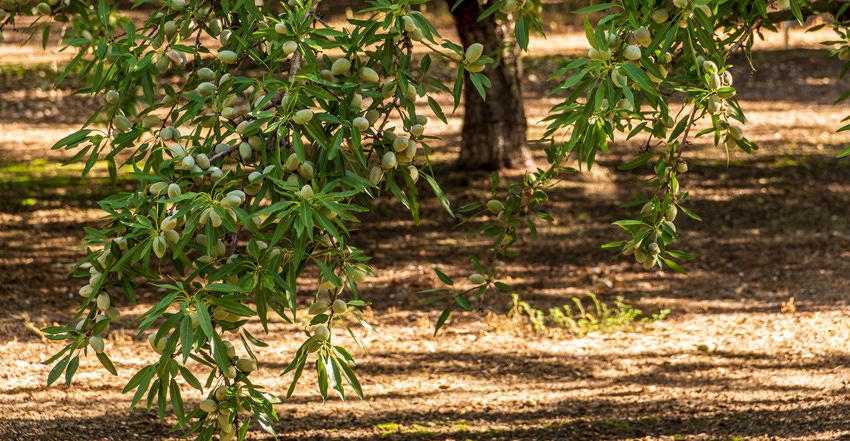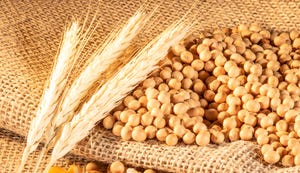
It took a few years, but ag land values in California now reflect action taken by legislators eight years ago to pass the state's landmark groundwater law. A growing chasm is evident as land values rise and fall significantly across the state.
Four northern San Joaquin Valley irrigation districts – South San Joaquin, Oakdale, Modesto, and Turlock – serve farmers in the counties of San Joaquin, Stanislaus, and Merced. They sit in a region known for its prime soil and access to central Sierra watersheds served by the Tuolumne and Stanislaus Rivers.
Passage of the Sustainable Groundwater Management Act in 2014 required local agencies to draft plans to bring groundwater basins into sustainable management by 2040. The public release of plans from critically overdrafted groundwater basins is widening the gap between the water haves and have-nots.
The annual Trends Report published by the California Chapter of the American Association of Farm Managers and Rural Appraisers (ASFMRA) continues to reveal this growing chasm of land values between regions with two sources of irrigation water, and those with well access challenged by declining water tables and subsidence. California's growing drought is only exacerbating the issue.
Regions
California's northern San Joaquin Valley region that includes western Amador, Calaveras and El Dorado, southern Sacramento County, and all of Contra Costa, Merced, San Joaquin, and Stanislaus Counties, is most notable for its growth, and its lows. While land values in the four irrigation districts mentioned above are among the highest in the state, there is a growing chasm between them and the westside districts served by the Bureau of Reclamation's Central Valley Project.
Except for the small White Wolf basin at the extreme southern end of the San Joaquin Valley, the four irrigation districts serving the northern valley region overlay the only groundwater basin in the valley that is not critically over drafted. The remaining valley groundwater basins are defined as critically over drafted by the California Department of Water Resources, and as such, are the focus of significant water cutbacks.
Related: Only 8 of 20 critical GSA plans approved
According to the Trends Report, most farmland values in OID, TID, and MID ranged from $30,000-$35,000 per acre with sales of almonds among the eastside irrigation districts exceeding $50,000 an acre.
California's Sacramento Valley is known for its variety of crops and access to plentiful supplies of generally inexpensive water via the Sacramento and Feather rivers. Rice, vegetables, fruit, and tree nuts are grown in abundance across the region.
The highest crop land values across the region were seen in the in the Yuba, Sutter region, where strong market demand and limited supplies of walnuts pushed prices there to $36,000 per acre. Walnut values from Colusa to Tehama County were slightly less than that, with the strongest sales commanding $32,000 per acre.
Vineyards
Nowhere in California is farmland more valuable than the Napa Valley, where in 2021 prime vineyards offered for sale sold for $500,000 per acre. Prime vineyard homesites in Napa County commanded upwards of $5 million per acre.
Those values drop significantly when moving west into Sonoma County. There prime vineyards sold for as much as $215,000 per acre, with prime homesite vineyards selling for as much as $3.1 million per acre.
Vineyard values fall precipitously from there as one moves north through the North Coast. Homesite vineyards in Mendocino County sold for upwards of $500,000 per acre, while vineyards in Anderson Valley commanded up to $110,000 per acre.
Related: Drought in ’21 cost California ag $1.1 billion
Wine grapes sales in the Lodi area ranged from $22,000-$40,000 an acre last year. Further south in the San Joaquin Valley, vineyards sold for $26,000-$32,000 in Fresno and Madera counties.
Higher vineyard values were seen on the Central Coast, where vineyards there sold for as much as $75,000 per acre.
Tree nuts
Despite low grower returns for almonds in 2021, powerhouse land pricing was seen in the northern San Joaquin Valley. Top orchards in SSJID sold for $65,000 per acre. Most of the parcels in this region tend to be 10, 20, and 40 acres, according to the report. Nevertheless, buyers remain willing to spend more on parcels within the well-served irrigation districts.
Elsewhere across California almond orchard values ranged from as low as $10,000 an acre in places like Westlands Water District in western Fresno County, to as high as $32,000 in the Sacramento Valley and $45,000 within Fresno County's coveted eastside water districts like Fresno Irrigation District.
Pistachios remain profitable for growers, despite export difficulties related to logistical logjams. Strong demand for orchards in the south and central San Joaquin Valley was reported, with sales ranging from $17,000 in western Fresno County to $55,000 in the best water districts. Sales in the Kern County region ran from $35,000 to $52,000 an acre.
Citrus
With much of the fresh-market citrus grown from Kern to Fresno counties, sales of groves in the three-county region of Fresno, Tulare and Kern ranged from $23,000 to $45,000. Coastal lemons in places like Ventura County traded for $49,000 to $90,000 an acre, with orchard values much lower across Riverside and San Diego counties. The Coachella Valley saw the highest citrus values, with the best groves there selling for $35,000 an acre.
For information on the California ASFMRA chapter, or to purchase a copy of the Trends Report, visit the association's website at https://calasfmra.com/
About the Author(s)
You May Also Like






